Before introducing the oldest Persian Hammams (Iranian Bath), let’s review some interesting information about the history of the bath house. For thousands of years, washing bodies in rivers has been a religious practice for most nations. The Egyptians bathed in the Nile, and the Indians bathed their bodies (and souls) in Ganges River. The first reference to the bath can be found in Torah in the book of Leviticus (verses 7-16), and more than 3,000 years ago a bathtub and a sewerage system were discovered in the ruins of the palace of the Greek Emperor.
Iranian Traditional Bath
The Persian Hammam, also known as the traditional Persian bath, is an ancient bathing ritual deeply rooted in the culture of Iran. This distinctive bathing experience combines physical cleansing, relaxation, and social interaction, as well as spiritual significance. Historically, the hammam was a public institution where men and women visited separately to maintain modesty. The traditional Iranian bath represents not only physical cleansing but also purging negative energy from the soul. In recent years, there has been a resurgence of interest in preserving this cultural heritage, and some luxury hotels and spas now offer modern adaptations of the traditional hammam experience.
History of Hammam
Remains of Greek and Roman baths dating to around 1700 BC are still standing. In the late 13th century, Marco Polo witnessed 300 public hot and cold baths in a Chinese town that were used daily by ordinary local people. This was despite the fact that the British hated bathing for centuries insofar as Queen Elizabeth I (16th century ) was proud of taking bath four times a year. Until much later, bathing was reserved for the aristocracy and the rich in many European cities.
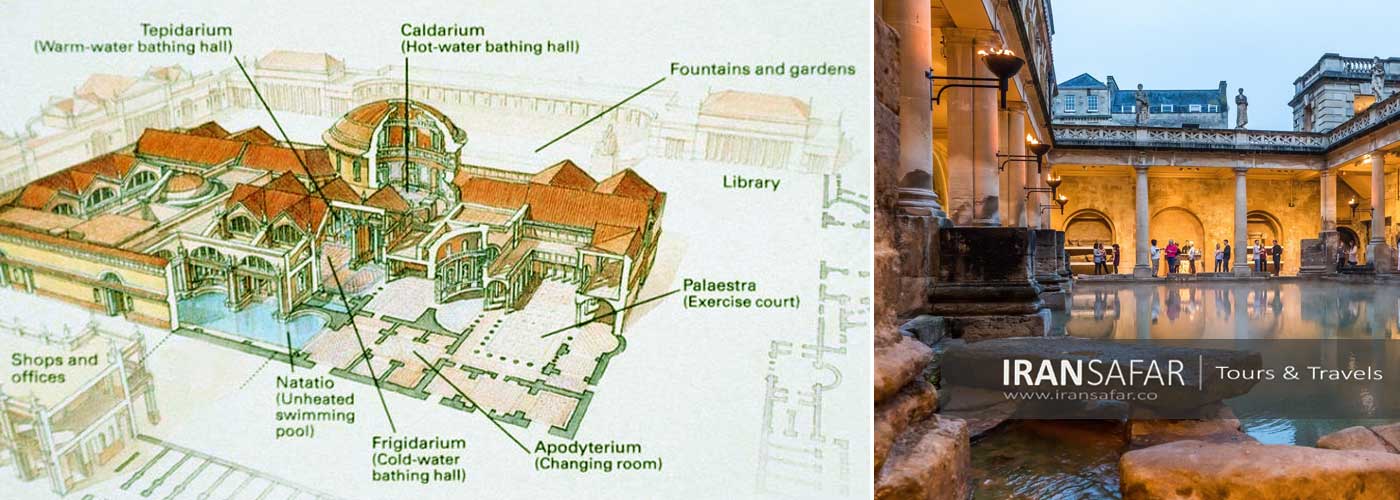 Roman Bath layout
Roman Bath layout
Roman Bath
From Roman bath to Turkish: Baths have historically been important not only in terms of health and sanitary, but also important in social and cultural point of views as a meeting place to socialize. This culture has survived to this day and has retained its charm due to unique architecture and beauty of historic baths. Although personal hygiene is said to have been in a very poor condition in the Middle Ages, there are baths attributed to ancient Greece that date back to 100 BC. However, baths acquired a style during Roman times.
From the time of the Roman Empire around 33 BC, there are about 170 baths left. They consist of a pool or a basin, magnificent sculptures, a library and a large garden, which were used for games and sports. There are similar sites in Mesopotamia, Babylon, ancient Egypt, and India, but the first public buildings specifically built for bathing are the Roman ones. A distinctive feature of the “Roman bath” is the water heating facilities through a heating system similar to a boiler.
Turkish Bath
What is widely known of the Roman bath style in the world today is the “Turkish bath”. The baths that existed in the Anatolian regions of Turkey are divided into two groups. The first are the baths that are formed around natural springs or thermal spas .The other group is baths whose water has healing properties and is drinkable.
In addition to the many abandoned baths that exist in Anatolian cities in Turkey these days, hundreds of historic baths are still used by tourists and locals alike. Most of the baths built in Turkey date back to the Ottoman period, so that in this period, immediately after the conquest of each city, the bath was one of the first buildings to be built.
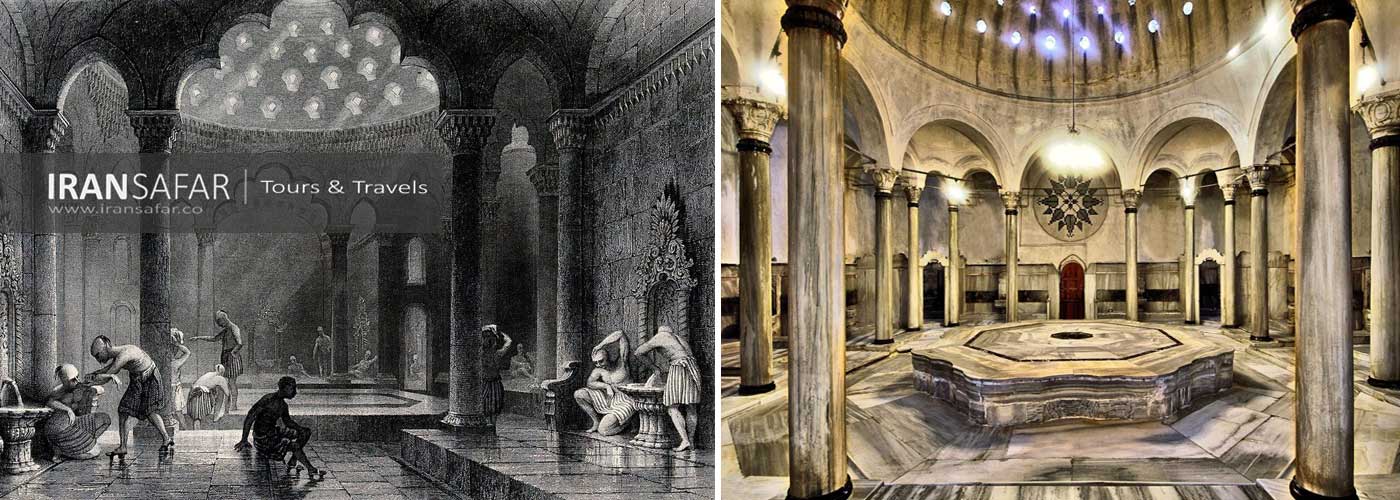
The use of traditional baths in the traditional way is still common on Thursday nights, wedding ceremonies and on the occasion of religious holidays in many cities of Anatolia, Turkey, so that traditional baths on special days around the clock host many men and women who bathe and See and gather together again.
History of Persian Hammam
The construction of the first Iranian bath dates back to 3000 years ago. In Persian literal texts, the first construction of Hammam is attributed to King Jamshid, the Mythic king of Iran. Cleanness was one of the conditions for participating in Zoroastrian religious ceremonies, and therefore the existence of a bath was necessary to meet this need. According to this thought, the dependence of clean body and clean mind on each other was considered a great blessing. For this reason, they always washed themselves in order to remove pollution and sins, and temples were arranged in favor of the goddess Anahita, the guardian of the water. Although we do not know the rituals in Anahita temples, but most likely the purification ceremony was performed in connection with water. After the arrival of Islam in Iran, bathing continued to retain its religious aspect, and most baths were built near mosques or markets and in the city center.
Another point that is interesting about Iranian baths is the endowed baths. These baths were financed by donations dedicated to people; so that everyone could prepare himself for his religious practices, with a clean body and a bath. The baths also to some extent reflected the social status of the people; Wealthy people had private baths in their homes, and middle- or poor-class people went to public baths for bathing. It is also necessary to mention that the baths in Iran and of course in Islamic countries were divided into two parts for women and men, and some hours of the day were allocated to women and other hours to men.
Iranians called the baths Hammam or Garm-Abeh. In these baths, activities such as washing the body, rubbing, massage, body hair removal, cupping, strengthening the hair with herbal medicines, etc. were also performed. Public baths in Iran, in addition to being a place for washing and the things mentioned, were also a place for people to gather, talk, smoke hookah and drink tea, and even eat! Iranians believed that the process of bathing and socializing with friends, neighbors or relatives in the bath, helps to have a delightful society.
With the advent of modern architecture in Iran and the arrival of piped water in houses, architects realized the simple point that can build a separate bathroom for each house. Therefore, the importance of public baths was lost and baths fell from prosperity.
But the building of historical baths and their remains with unique and attractive designs can be found in old cities and neighborhoods all over Iran. Many of them have been forgotten due to the loss of use and some have been completely demolished and replaced by another building. A few lucky ones have been restored with the help of the Heritage Organization or and have been converted into museums or traditional tea houses.
The architectural features of Persian Hammams
In the spatial study of all Persian hammams in urban contexts and their comparison, we see that almost all baths have the same elements. All Persian Hammams consist of four main sections and extra service areas adjacent to these main sections. Each section was designed to create three different atmospheres in terms of temperature (cold, warm and temperate). The construction of baths was designed based on the four main temperaments or four natures known in traditional Iranian medicine, namely hot, cold, dry and wet, because human health was considered in the balance between these natures.
Iranian Hammam layout consists of four main sections:
Also Read : Architectural Features of Ancient Persia
Sar Dar
The connection point inside and outside the Hammam: The entrance is usually an octagonal small room where the owner of hammam or the care taker welcomes the clients. This is where clients can pay the entrance and also leave their valuable belongings. Most baths have a special entrance with murals depicted on the gate.
Passing through the entrance through a corridor or a series of stairs, we enter Sarbineh which is always set at an angle in order not to be seen from the entrance.
Sarbineh
The cloak room where people could undress: Sarbineh or Bineh is a place to prepare for entering the caldarium or leaving the bathroom. Sarbineh has also been a place to take off clothes, to get towels, and serves as a waiting before entering the caldarium or getting drying after bathing. There are multiple platforms where people can seat, chat with companions, rest, have a cup of tea and smoke a hookah. Sarbineh temperature is cold and dry.
Mian Dar
The connecting corridor: The corridor that connects Sarbineh to the caldarium; this space was in the form of a winding vestibule so that one could go to the cloakroom from the caldarium with a delay – without feeling cold. Also, Mian Dar vestibule does not allow air exchange between the air outside and inside easily and prevents the accumulated heat in caldarium to be wasted.
Garm Abeh
Caldarium (Washing Place): This was a very hot and steamy room heated by an underfloor heating system using tunnels with hot air coming from the furnace. This was the hottest section in the regular sequence of bathing rooms. There used to be a pool in the middle of caldarium and some cold water basins around it.
A number of service spaces such as toilets and special booths for hair removal are usually present in most Persian Hammams.
Historical Iranian Baths
Once upon a time, all Iranian people used public hammams of their own neighborhoods. The traditional bath was not designed only for washing. They were also used for other purposes such as social activities, gatherings and celebrations.
But nowadays, this traditional concept is almost wiped out from Iranian culture. there is private bath in each house, and in more luxurious residences, each room has a bathroom.
Here is a list of famous historical hammams in Iran:
1
Bath of Sultan Amir Ahmad – Kashan
Sultan Amir Ahmad Bath is one of the most important historical Persian Hammams in Kashan, which was registered in 1976 as one of the national heritage of Iran. This bath has an area of 1102 square meters and takes its name from the adjacent Imamzadeh (Holy Shrine). According to the artifacts obtained during the earthquake of 1150, this bath was built during the Seljuk period, but its cloak room belongs to the Qajar period 19th century. Some people think that the bath was rebuilt on the ruins of the previous bath and a small bath was added to it. The municipality of Kashan bought this historic mosque in 1996 to save it from destruction by repairing and restoring it.
This Hammam was converted into a traditional dining room for some time after its renovation, until it was finally turned into a museum and today it is under the supervision of the Kashan Municipality. The attractive decorations, plaster carvings and lime stuccos, blue and gold tiles, vaulted ceilings, murals and stained glass of Sultan Amirahmad Hammam, have made this collection a special and spectacular work.
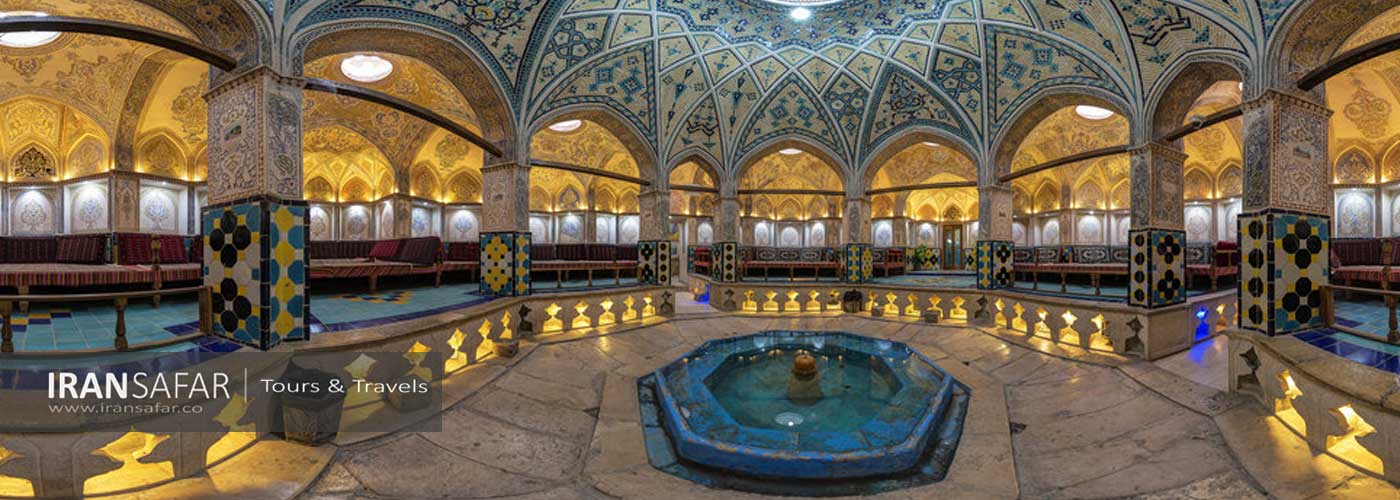 Amir Ahmad Persian Hammam, Kashan, Iran
Amir Ahmad Persian Hammam, Kashan, Iran
2
Vakil Bath – Shiraz
From the reign of Karim Khan Zand – VAKIL- beautiful works and monuments have been left in Shiraz. One of these masterpieces is called Vakil Bath (Hammam Vakil), which has an area of 11,000 square meters, 8660 meters of infrastructure, 120 meters long and 80 meters wide. It was built by Karim Khan Zand in the Darb-e Shahzadeh neighborhood, now Taleghani Street. The bathroom is in the form of a cube and its entrance is located on the north side. The north façade of the bathroom overlooked the play area, which was later demolished and replaced by a short street. Vakil Bath is known as very valuable in terms of architecture and aesthetics and has now been turned into a carpet museum of Iran by the Cultural Heritage Organization of Fars Province.
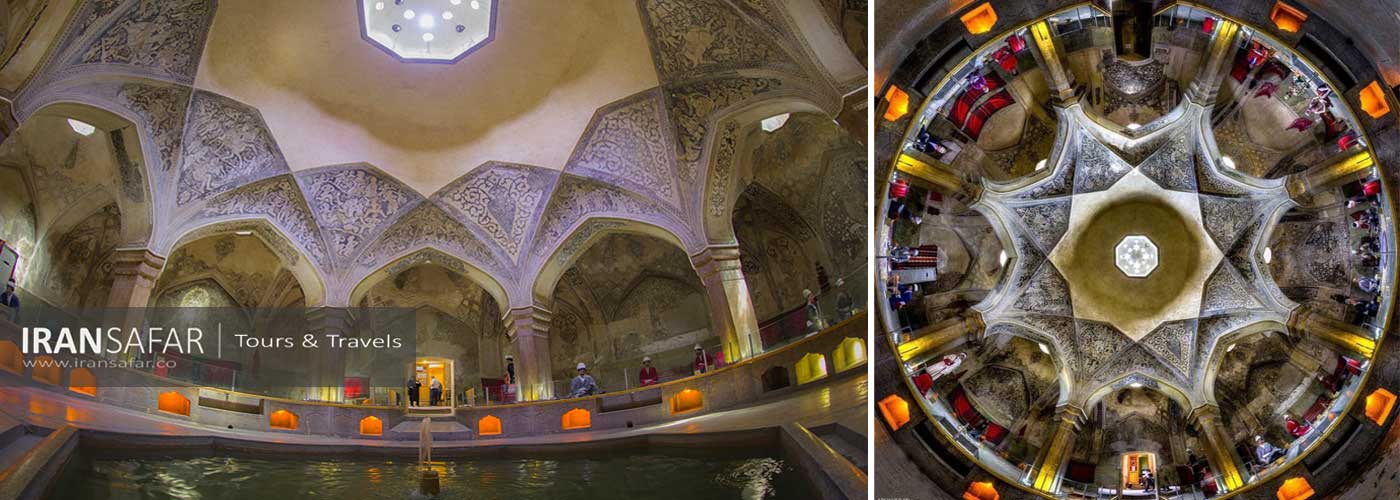 Vakil Bath, Shiraz, Iran
Vakil Bath, Shiraz, Iran
Also Read : Karim Khan Citadel
3
Bath of Ganj Ali Khan – Kerman
Ganj Ali Khan Bath is one of the main elements of “Ganj Ali Khan” complex in Kerman, which was built in 1611 AD. Ganj Ali Beyk, nicknamed Ganj Ali Khan, was one of the rulers of Kerman during the reign of Shah Abbas I, who performed important civil works in Kerman. He created a large square in the middle of the city to host public promenades. This square, which is more than one hundred meters long and fifty meters wide, is surrounded on four sides by monuments such as a school (madrasa), a caravanserai, a public bath, a water reservoir and the city mint. This is an excellent collection of Safavid Empire era civil works
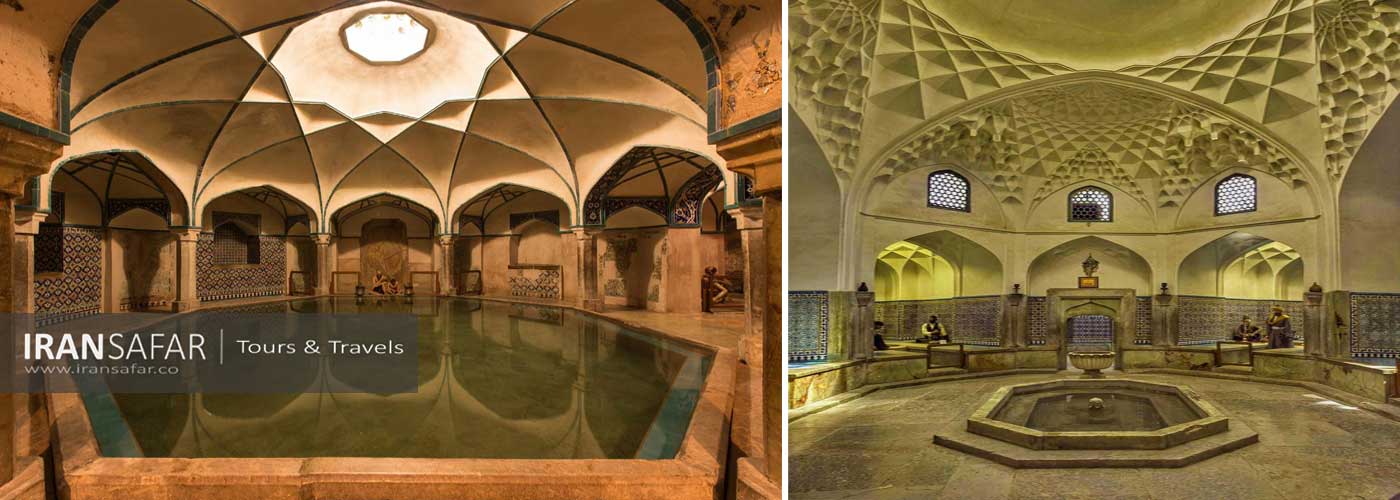 Ganj Ali Khan Persian Hammam, Kerman, Iran
Ganj Ali Khan Persian Hammam, Kerman, Iran
located on the southern side of Ganj Ali Khan Square, the Ganj Ali bathhouse (1631 AD) was converted into an anthropological museum in 1971. The entrance of the building is painted with ornaments of the Safavid era. The Ganjali Baths are unique works of architecture decorated with exquisite tile works, paintings, stuccos, and arches.
In the Sarbineh section and main yard of the bath there are many life-size statues. These statues were designed at Tehran University’s faculty of fine arts in 1973 and then transferred to this museum.
4
Haj Dadash Zanjan Bath
Haj Dadash Bath is one of the historical monuments of Zanjan. This bath is the only stone pillar bath in Zanjan, the main roof of which is located on four stone pillars. The building is estimated to be approximately 150 to 200 years old. Now, with the preservation of the bath texture and with a few changes, this place is used as a dining room and is a good place to visit in Zanjan.
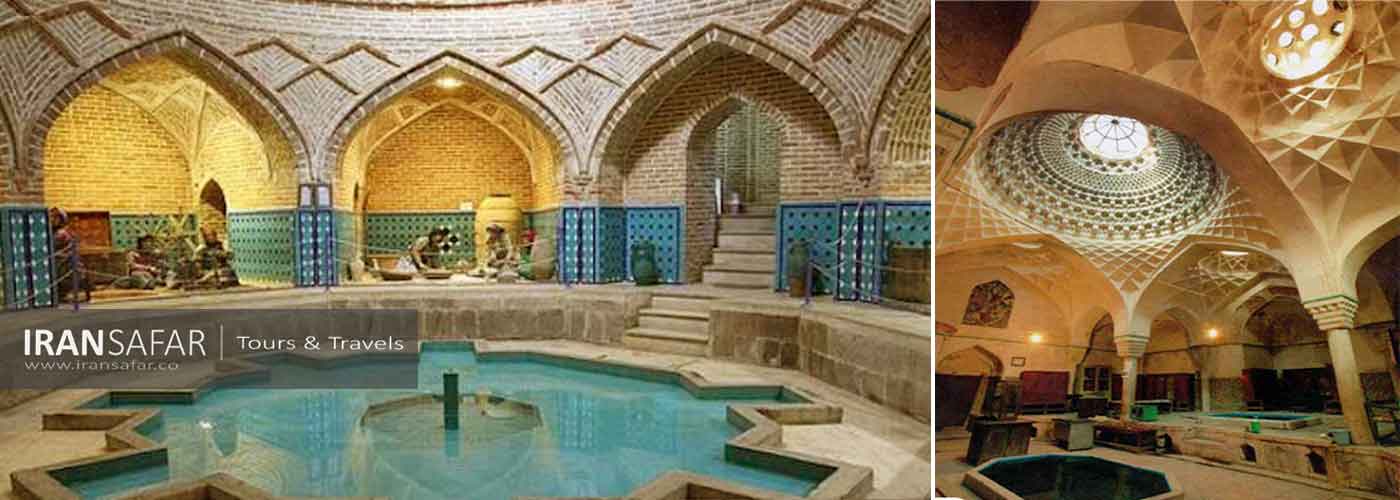 Zanjan Persian Hammam
Zanjan Persian Hammam
5
Sheikh Baha’i Iranian Bath – Isfahan
If you are looking for the most famous historical bath in Isfahan, you should go to Sheikh Baha’i Bath, which was built during the Safavid period and in 17th century by the order of Shah Abbas I. Sheikh Baha’i Bath of Isfahan is said to be designed by the famous scientist “Sheikh Baha’i” and is known as a mysterious monument due to its unique features; it was heated with only one single candle!
The heating system of this bath is one of the engineering masterpieces using the laws of physics and chemistry. The water boiler of this bath operated with a methane gas system originated from Grand Mosque’s sewage canals.
The most realistic theory about the fuel of the heater is an underground ceramic piping system that was discovered between the public toilets of the congregational grand mosque (Jame Mosque) and Sheikh Bahai hammam. Probably flammable gases like methane and sulfur oxides led to the torch of heated pool by the natural suction method and methane and sulfur oxides burned directly as the heating source in torch, or these gases were used from the wastes of hammam. According to old residents in the neighborhood, there was an artificial marsh behind the Garmkhaneh and wastewater flew in the marsh and needed gas was obtained from this marsh.
6
Ali Gholi Agha Bath – Isfahan
Studies show that this historical bath was built in 17th century by one of the Safavid courtiers named Ali Gholi Agha. At that time, public baths was open to local men and women in two shifts in the morning and in the afternoon. In some cases, the rich rented the whole bath and had certain hours at their disposal. After renovation and the addition of sculptures, this bath changed its use to the Anthropological Museum.
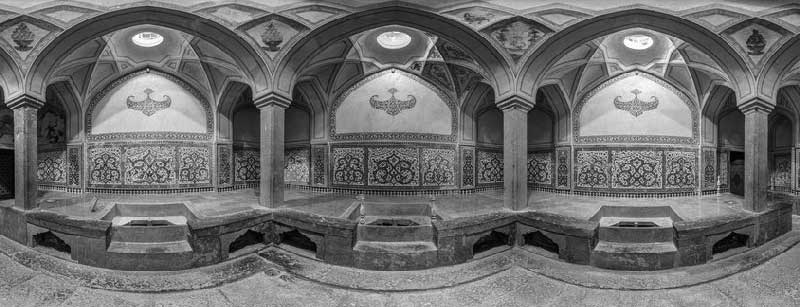 Ali Gholi Agha Persian Hammam, Isfahan, Iran
Ali Gholi Agha Persian Hammam, Isfahan, Iran
The decoration and layout of Ali Gholi Agha historical bath is in the style of Isfahan architecture in the late Safavid era and its building consists of two sets of large and small baths. As mentioned, the eye-catching decorations of this bath are reminiscent of different periods, for example, during the Qajar period, paintings were added to this building. In general, in addition to the Anthropological Museum, this bath can also be considered an architectural museum. This bath along with the mosque, bazaar, Chahar Souk and caravanserai are parts of the historical complex of Ali Gholi Agha.
7
Fin Bath – Kashan
Fin Bath is located in Kashan Fin Garden – one of the best eaxmples of Persian Garden.
This old bath is famous for the assassination of Mirza Taghikhan Amir Kabir, Prime Minister of Nasser al-Din Shah Qajar on January 10, 1852.There are two baths in the southern part of the Fin Garden, known as the Small and Large Baths. The small bath dates back to Safavid period and was built at the same time with original building of the Fin Garden. The large Bath was built during the Qajar period during the reign of Fath Ali Shah. The large bath is for the rulers and the small bath is used by servants.
 Fin Garden, Kashan, Iran
Fin Garden, Kashan, Iran
8
Qajar Bath – Qazvin
One of the spectacular attractions in the city of Qazvin, which is recommended to any first time visitor, is the Qajar bath. It is a beautiful small old bath located in a tiny alley at the heart of Qazvin. It is now converted into an anthropological museum. This historical attraction used as a museum today was built in 1647 by the order of the famous Safavid king Shah Abbas II. Though the bath dates back to the Safavid Era, it is called “Qajar” due to its builder’s origin.
The total area of Qajar bath is about 1045 m2 and consists of two separate parts for men and women and three main parts of Sarbineh (Cloak Room), Mian-dar and Garmabeh. The main door of the bathroom opens to the south and leads to the Sarbineh with a spiral staircase. The large Sarbineh of the bath, in the middle of which there is a beautiful pond (Hawz), has six elevated platforms where customers once sat for rest before and after washing. There was another door to the bathroom from the west, which was probably for women.
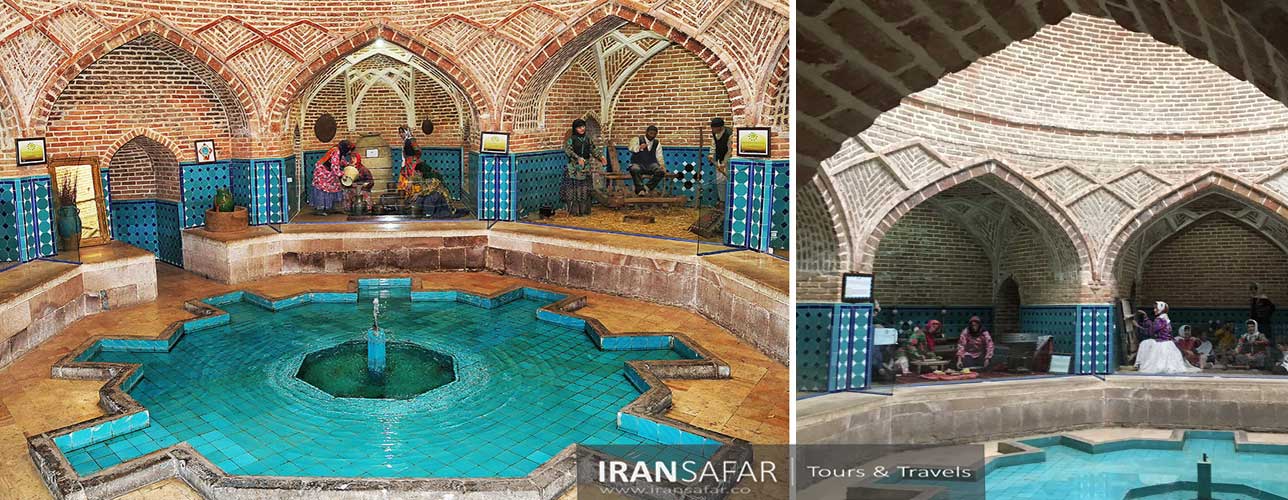
Persian Bath Fast Facts
– The origins of the Persian bath can be traced back to ancient Persia (modern-day Iran) during the Achaemenid and Sasanian Empire.
– In the past, men used to take a bath before sunrise until eight o’clock in the morning, and from that time until the afternoon, the bath was available to women.
– In the past, some happy events such as the bride and groom bath celebrations were held in these Persian Hammams.
– Sometimes people used the Persian baths as a shelter, and some people who fled from various social or political incidents took shelter in the baths.
– Persian Hammams were built in all the cities and villages of Iran next to mosques and were opened before the morning call to prayer.
– Persian baths often have adjacent water reservoirs called “Ab Anbars” to store and supply water.
– The core element of the traditional Persian bath is the steam room, where visitors indulge in hot steam to cleanse and relax their bodies.
– Hammams often include a designated area for relaxation and napping after the bathing ritual.
– The traditional Persian bath represents cleansing not only of the body but also of negative energy and impurities from the soul.
– Persians believe in the therapeutic benefits of hammams for various ailments, such as respiratory conditions and joint pains.
– With the advent of modern plumbing and hygiene practices, the popularity of traditional hammams declined in mid-20th century, but there has been a recent revival of interest in preserving this cultural heritage.
– In recognition of its cultural significance, UNESCO has inscribed the traditional Persian bath on its list of Intangible Cultural Heritage.
– The Persian bath tradition has influenced similar bathing practices in neighboring countries, such as Turkey and the Arabian Peninsula.

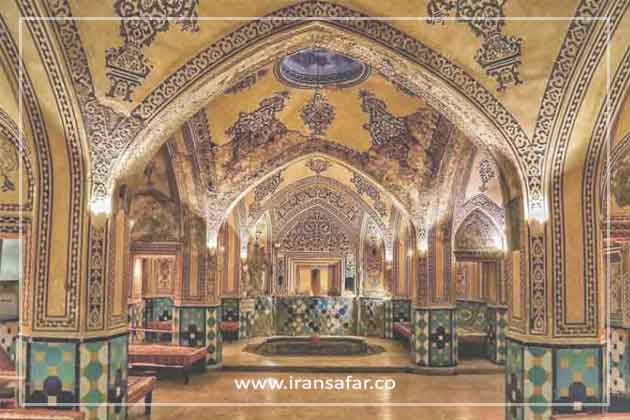

Comment (0)